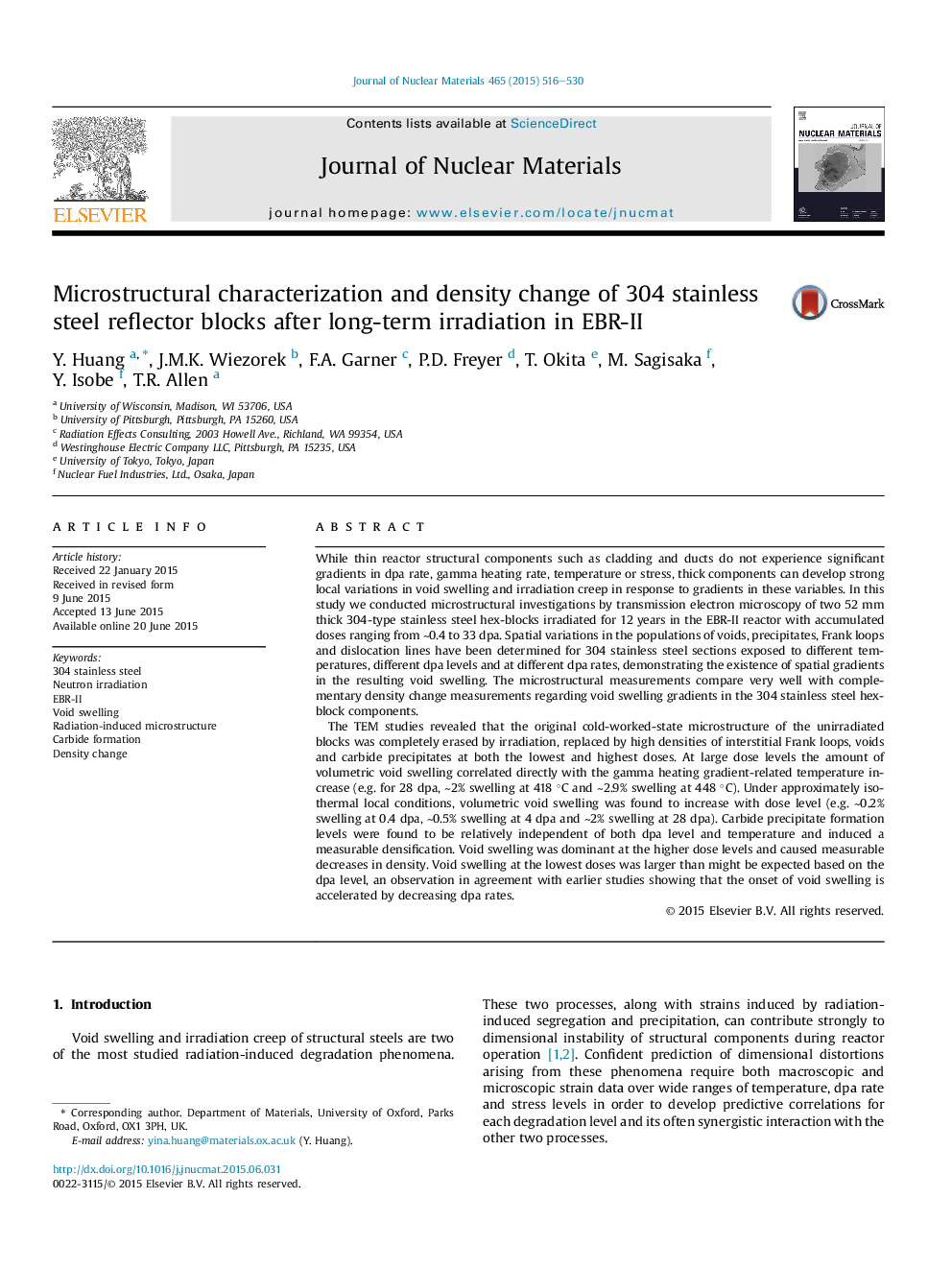| Article ID | Journal | Published Year | Pages | File Type |
|---|---|---|---|---|
| 7965440 | Journal of Nuclear Materials | 2017 | 15 Pages |
Abstract
The TEM studies revealed that the original cold-worked-state microstructure of the unirradiated blocks was completely erased by irradiation, replaced by high densities of interstitial Frank loops, voids and carbide precipitates at both the lowest and highest doses. At large dose levels the amount of volumetric void swelling correlated directly with the gamma heating gradient-related temperature increase (e.g. for 28 dpa, â¼2% swelling at 418 °C and â¼2.9% swelling at 448 °C). Under approximately iso-thermal local conditions, volumetric void swelling was found to increase with dose level (e.g. â¼0.2% swelling at 0.4 dpa, â¼0.5% swelling at 4 dpa and â¼2% swelling at 28 dpa). Carbide precipitate formation levels were found to be relatively independent of both dpa level and temperature and induced a measurable densification. Void swelling was dominant at the higher dose levels and caused measurable decreases in density. Void swelling at the lowest doses was larger than might be expected based on the dpa level, an observation in agreement with earlier studies showing that the onset of void swelling is accelerated by decreasing dpa rates.
Related Topics
Physical Sciences and Engineering
Energy
Nuclear Energy and Engineering
Authors
Y. Huang, J.M.K. Wiezorek, F.A. Garner, P.D. Freyer, T. Okita, M. Sagisaka, Y. Isobe, T.R. Allen,
